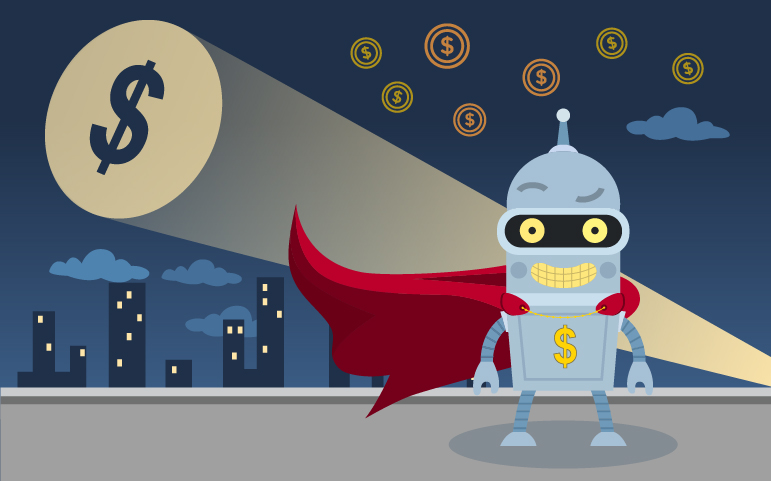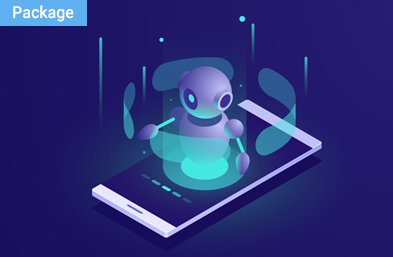
Sep 25, 2017
Four ways of building a chatbot strategy that is foolproof
Chatbots have been the rage of the tech industry for over a year now. Many major companies have created chatbots for their consumers or for their employees.
There is also a lot of media hype about chatbots with all the major tech news sites writing articles on how to use bots to make money, sending out newsletters about bots, interviewing key people in the bots industry and even having a bot-of-the-week article promoting some bot startup.
Some of the well-known companies that have developed chatbots are Mattel, Whole Foods, Taco Bell, Domino’s Pizza, Pizza Hut, Burger King, Disney, Tommy Hilfiger, and Fiat. All of these companies are worth billions of dollars and have the budget to experiment with trending technologies. Market reports from all major advisory firms also indicate that chatbots are going to be huge in the next few years.
In this article, we will answer these questions and cover the basic factors that you need to keep in mind when building your chatbot. These chatbot best practices will ensure that your bot will not be a financial pitfall.

AI-BASED CHATBOT IMPLEMENTATION STRATEGY
Softweb’s AI-based bot implementation strategy is specifically designed to help companies understand how to build and deploy intelligent chatbots.
1) Do not fall into the “if you build it, they will come” mindset
When chatbot technology came into the limelight last year, the logic behind it was that consumers are suffering from app fatigue and do not want to download too many applications since it clutters up their smartphone. Since the chatbot only resides as a contact in the social messaging application of the user’s choice, this is a much better way to get in touch with your consumers.
Add to this the fact that Millennials and Gen-Z are not just a digital generation, but also a smartphone generation. Using social messaging apps is second nature to them and marketers need to figure out how to engage them and interest them.
For many companies, the strategy seems obvious – build a bot for Facebook Messenger.
There is no doubt that Facebook Messenger is the biggest social messaging application in terms of active monthly users, which has made it very popular with chatbot makers.
However, today there are over a 100,000 chatbots available on Facebook Messenger alone. This means that the days of launching a bot and expecting it to become a viral hit because it is the only one in your industry are over.
A Facebook ad campaign is a good way of reaching out to a large audience in order to stop depending on just organic growth. But before you invest in it, you need to thoroughly understand all the campaign related terminology such as campaign level, ad set level, ad level, placement options, and how to select the target audience. You then need to decide on what kind of creative do you want to launch – image ads, carousel ads or video ads. Once you have decided on that, A/B testing is a good way to know which of your creatives are working.
A chatbot that works only on Facebook Messenger may not be enough to reach your target audience. You also need to build chatbots for popular apps such as Kik and Snapchat besides keeping a finger on the market on which applications are popular and which ones have fallen out of favor.
If you are building a chatbot for use within the enterprise, then Slack is the right option since the collaboration platform is popular with organizations. Skype for Business and internal messaging systems can also host chatbots.
The bottom line is that companies need to pay equal attention to their marketing strategy as they do to the development side.
2) Focus as much on the copywriting part as on the code
Chatbots are considered a part of conversational UX and for good reason. Conversational UX lets your customers interact with your business through an automated conversational interface that keeps improving and gives responses that are more relevant over time based on user input.
There are several methods to build a chatbot. There are open source frameworks, DIY bot-builder tools in which the user only has to drag and drop blocks (aka the business logic) and proprietary frameworks such as the Microsoft Bot Framework. There are pros and cons for any approach that you take but this is not the hard part. For example, an experienced .NET developer can quickly learn how to build a chatbot using the MS Bot Framework.
The key to building an engaging chatbot is good copywriting. The flow of the conversation should be such that the user should not feel that he is reading a technical manual or a FAQ section of a website. Even a rule-based bot can be entertaining and fun to use if you involve a good copywriter in the bot development process. He will make sure that the utterances of the bot are witty and relevant.
The answers that your bot gives out should be short to keep the flow of the conversation easy to understand. Do not make the mistake of copy-pasting sections of your website since the chat format is not suited for long paragraphs. The bot also needs to give options to the user to repeat the question and not just go on giving answers like a robot! You also have to make sure that the bot does not start the entire conversation again just because it is stuck at one point.
The most important point to remember is that even though you are designing the bot to mimic a human it should be obvious to the user that he is interacting with a bot and not a human. This may seem contradictory advice but the fact is that there is no chatbot in the world that can successfully pass off as a human.
Accepting this limitation and acknowledging it at the beginning of the conversation with a statement such as “Hi, I am a bot. But I will try my best to help you” is a good way to avoid frustrating the user. This disclaimer makes it clear to him that he is dealing with an artificial entity and not some customer service representative who is unable to understand the query or is being rude.
You also need to give your bot a human-like personality since people love anthropomorphized objects.
3) Your chatbot needs to solve a real problem
Do not rush into building a chatbot just because your competitors have already launched one. Even the most well-designed chatbot with a witty and entertaining script will not gain traction with your customers if it does not help them in a better way compared to your other communication channels.
To avoid this pitfall, you need to develop good use cases. This means identifying the relevant customer pain points and creating your value proposition based on it. Your chatbot business model needs to be part of a wider business strategy. You need to be clear on what utility your bot is going to provide to the user.
In the list below, we have categorized bots into eight types based on their function –
1. Entertainment bots based on famous characters from history, movies and books that converse with the user in the way that the original character would have it he was alive or real. The purpose here is brand building.
2. Office productivity bots that help employees automate routine and mundane tasks such as scheduling meetings, coordination between departments on various tasks and so on.
3. Department specific bots e.g. marketing, sales, accounting, HR, supply chain etc. These are similar to the general office productivity bots in the sense that they help employees in these departments to quickly get relevant information and automate basic tasks.
4. Customer service bots that handle after sales service, including complaints. The customer service bot can handle the basic queries and transfer the more complicated queries to a human CSR.
5. Online shopping assistant bots deployed by eCommerce companies to help website visitors choose the right product.
6. Food ordering and delivery bots used by fast food chains. Domino’s Pizza and Pizza Hut are the two best examples of this type of bot. There are many others in private beta mode as well.
7. IT support bot or a tech bot can help customers troubleshoot minor tech issues without them having to call up a phone number and wait for their turn to talk to a CSR.
8. Travel agent bot that assists customers with helping them choose the cheapest flights, hotels and general trip planning.
A good example of a successful customer service chatbot is KIA’s NiroBot that was launched on Facebook Messenger in November 2016 but came into the limelight during SuperBowl LI in 2017. The carmaker created a series of well-received ads of its Niro model that led to a massive spike in Americans using the bot to find out more information about it. The bot was handling around 115,000 interactions per week during the SuperBowl campaign. If KIA had gone for a traditional marketing approach then it would probably have had to spend a lot more on handling so many queries.
Marketers need to ask themselves – How will my bot be better than my other communication and marketing channels?
4) Don’t buy into the industry hype
This point ties into the previous one. Every few years, the mainstream media discover one of the emerging technologies and start to publicize it as the ultimate game changer. This creates many unrealistic expectations for the technology, which in turn eventually results in disillusionment. The chatbot industry is not immune to this trend and certain chatbot promoters have been marketing it as the best thing since sliced bread for the last one year.
Gartner covers this very well with its hype cycle charts. In Gartner’s Hype Cycle for Emerging Technologies 2017, chatbots (called virtual assistants in the chart) are in the peak of inflated expectations phase. The technology is also in the same category in Gartner’s Hype Cycle for the Digital Workplace 2017.
At this moment, the industry is facing a certain amount of backlash from critics who say that chatbots are not the be-all and end-all of customer service and conversational UX. They are right in the sense that chatbots cannot be the only solution to improve your customer service problem or create successful marketing campaigns. While chatbots can attract a lot of eyeballs in your marketing campaigns and be fun to interact with for your consumers they must also provide a certain level of utility to your consumers.
Chatbots are not going revolutionize the way businesses operate, but they will occupy a niche position in customer service as well as sales and marketing.
Many other factors affect the chatbot’s success rate as well. Deciding between different bot development frameworks, which AI technology to use to power the bot’s intelligence and retraining of the bot to make it more intelligent over time are all factors that require a lot of technical expertise. The main point to remember is that bot development is not a fire and forget project. It requires maintenance, upgrades which involve code level changes and analyzing user feedback to ensure that it stays relevant.
To know more on how to build a chatbot that will give you good ROI, talk to our bot developers.
Need Help ?
We are here for you
